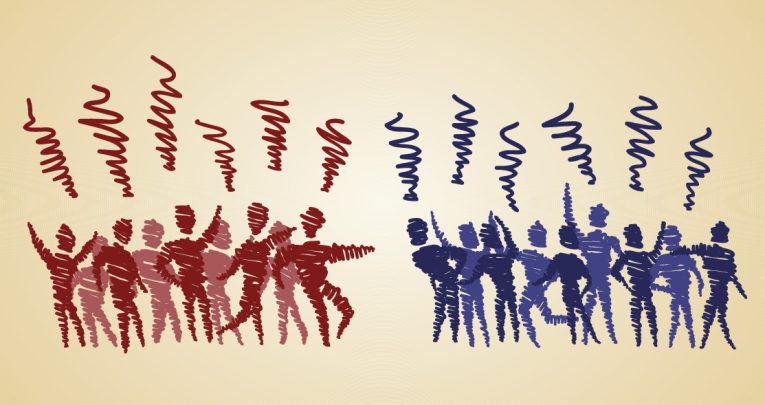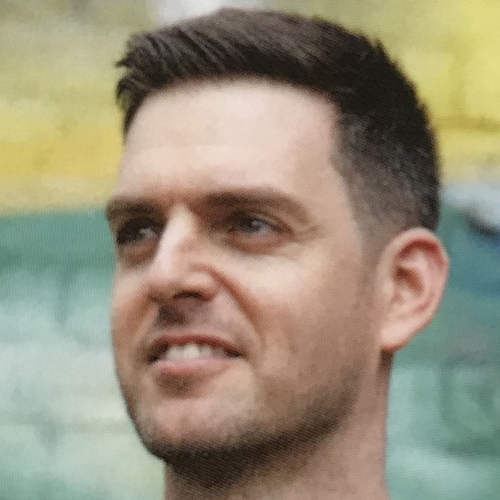When Two Tribes Go to War: Why the ‘traditional vs progressive’ teaching debate helps no one

Jonathan Lear makes the case for why teaching professionals shouldn’t get drawn into the binary ‘traditional vs. progressive’ debate, but instead explore the fruitful approaches that lie somewhere in the middle… One of the things that I’ve never really understood about some of the current debate in education is how we seem to spend a […]

- by Jonathan Lear
- Award-winning teacher, education consultant and author Visit website

Jonathan Lear makes the case for why teaching professionals shouldn’t get drawn into the binary ‘traditional vs. progressive’ debate, but instead explore the fruitful approaches that lie somewhere in the middle…
One of the things that I’ve never really understood about some of the current debate in education is how we seem to spend a lot of time and energy just going around in circles. A perfect example of this is the age-old debate between those who promote traditional teaching and those who favour progressive approaches.
At first, I thought maybe it was me – maybe if I got my head around the intricacies of the arguments I’d be as involved as the next man. What I’ve realised though, is that by and large, and certainly for a lot of the people immersed in the debate, there are no intricacies. What we’ve got instead are polarised opinions and entrenched beliefs around ‘what works’.
Narrowing the repertoire
You could argue that one lot are more guilty of this than the others, but I’m not really interested in pointing fingers. What bothers me is that it treats education as if it were black and white: ‘Direct instruction is the best means of gaining new knowledge, therefore that is what you should do,’ on the one hand, versus ‘Discovery learning allows children to explore and develop creative and critical thinking, therefore that is what you should do,’ on the other. Even the curriculum itself is at it with its prescriptive ‘Children should be taught…’ statements.
It’s tempting to just ignore it and get on with things, but it’s getting increasingly difficult to avoid the impact of this debate on schools and teachers. I can just about take being told what to teach, even if I don’t like it, but I can’t put up with being told how to teach – particularly by people who have spent more time with their noses in academic research than actually interacting with children.
Focusing the debate on extremes leads to the narrowing of a teacher’s repertoire. What seems to be ignored in the midst of these arguments is that far from being capable of adopting only one approach, great teachers utilise a much more sophisticated and blended pedagogy than they’re often given credit for.
Picking sides
To start with, I have no issue at all with the idea of overt or direct instruction being an effective way of imparting knowledge. A transmission or ‘nuts on a plate’ model works; the children come in and we serve up the knowledge in easily digestible chunks. This tends to be our bread and butter as teachers, and presenting learning with this path of least resistance thinking is sometimes the most appropriate method.
At the other end of the spectrum there seems to be ‘discovery learning’. If I’m honest, I don’t think I’ve encountered pure discovery learning at any point in my career, with the possible exception of Sugata Mitra’s explorations around SOLE (Self-Organised Learning Environments), which I’ve yet to be convinced about. The two camps set their stalls out and teachers are asked to pick sides, while the interesting stuff in-between is missed.
In terms of a blended pedagogy (and to keep the nut analogy going)! there are a range of different and equally valuable approaches available to teachers:
• Nuts on a plate Direct instruction, creative direct teaching
• Nuts scattered in the clearing Facilitated learning – ie. not teaching them anything, but having the means to learn readily accessible
• Hiding the nuts in a box Guided discovery – ie. not teaching them anything, and then creating (and managing) desirable difficulties to regulate complexity, struggle and challenge
Getting the blend right
For me, whilst the above is not intended as a definitive list, the key to developing creativity and creative thinking in education is about getting the blend just right – teachers can seamlessly move between different approaches.
The more time we waste at the extremes, the less focus we place on developing this blended pedagogy. Without it, even the most creative of curriculum documents won’t make a blind bit of difference.
Jonathan Lear is a teacher and education consultant. His latest book, Guerrilla Teaching, is available now in paperback from Independent Thinking Press, priced at £18.99. Further details of his training and consultancy services can be found at www.guerrillaeducation.co.uk and by following @GuerrillaEd










